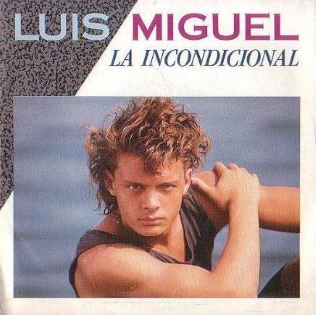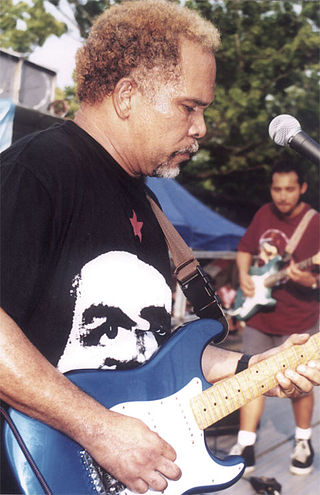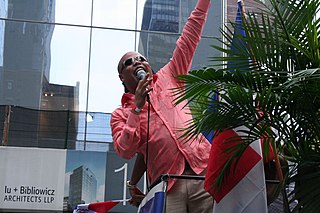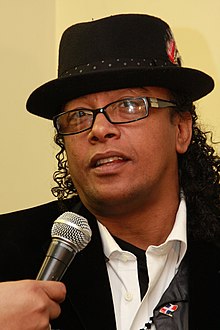
Juan Luis Guerra Seijas is a Dominican musician, singer, composer, and record producer. He has sold 15 million records worldwide, making him one of the best-selling Latin music artists. Throughout his career, he has won numerous awards including 24 Latin Grammy Awards, three Grammy Awards, and one Latin Billboard Music Award. He won 3 Latin Grammy Awards in 2010, including Album of the Year. In 2012, he won the Latin Grammy Award for Producer of the Year.

Merengue is a type of music and dance originating in present day Dominican Republic which has become a very popular genre throughout Latin America, and also in several major cities in the United States with Latino communities. Merengue was inscribed on November 30, 2016 in the representative list of the Intangible Cultural Heritage of Humanity of UNESCO.

Bachata is a genre of music that originated in the Dominican Republic in the 20th century. It contains elements of European, indigenous Taino and African musical elements, representing the cultural diversity of the Dominican population.

Juan de Dios Ventura Soriano, better known as Johnny Ventura nicknamed El Caballo Mayor, was a Dominican singer and band leader of merengue and salsa.
Ramón Orlando Valoy García, is a Dominican musician, singer, arranger, composer, record producer and songwriter, besides being a gran maestro pianist in Caribbean rhythms. Ramón Orlando received seven Casandra awards in the 1992 ceremony, including the Soberano, which is the most important category in the Dominican awards ceremony. In 2005, he was nominated for the Latin Grammy Award in the Best Merengue Album category.
Grupo Aguakate was a Dominican merengue group from 2003 to 2006. The singer, known as Gerpis "Shino" Correa, is sometimes also called by the group name, Aguakate. Shino is also a radio personality on La Mega radio station in New York, being heard by thousands each morning on the show "El Vacilon de la Mañana", and he is also known for his humorous lyrics that use double entendre.

Daniel Santacruz is an American-born Dominican musician, singer, and record producer. Born in New Jersey and raised in the Dominican Republic to a Cuban father and a Dominican mother, Santacruz is a Latin Grammy Award winner.

"La Incondicional" is a song written, produced, and arranged by Spanish musician Juan Carlos Calderón and performed by Mexican singer Luis Miguel. It was released in 1989 via WEA Latina as the third single from Miguel's sixth studio album, Busca una Mujer (1988). The song became his second #1 single on the Billboard Hot Latin Tracks chart after "Ahora Te Puedes Marchar" in 1987. The song broke several airplay records in Latin America, topping the charts in Mexico, Chile and Peru; and the top-ten in other countries. The success of the song helped push the album to #3 on the Billboard Latin Pop Albums with approximate sales of four million units.
While the Dominican Republic is known for shaping merengue and bachata music, its musicians have also melded these influences into the early development of salsa music amongst the Latin community of New York City in the early 1960s. A major development in those initial days of salsa occurred when Johnny Pacheco, a Dominican-born musician living in New York City, teamed with partner Jerry Masucci to create Fania Records in 1964. They started selling records from the trunk of cars on the streets of Spanish Harlem, signing up young artists, creating new sounds, and eventually having hit records. Over the next 15 years, Fania Records helped define the sound, culture, and language associated with the salsa genre, a musical movement that arose partly from the unavailability in the United States of music produced in Cuba.

Luis Díaz Portorreal, best known as Luis Días, was a musician, composer and performer of popular music born in the Dominican Republic.
Antonio Rodríguez Castillo better known as Sexappeal is a Dominican Salsa singer from Santo Domingo. In 2005, he was awarded ''Best Dominican Salsa Singer of the Year'' in the Casandra awards, the most important in the country.

"Je l'aime à mourir" is a French-language song written by Francis Cabrel. It is taken from his second album Les Chemins de traverse released in 1979 that sold over 600,000 copies in France. The single "Je l'aime à mourir" became a hit single for Francis Cabrel in France, Quebec (Canada), Europe and internationally. Spanish singer Manzanita interpreted the song to Spanish flamenco audience making the hit song popular again for the second time. It is considered Cabrel's most definitive hit alongside "Je t'aimais, je t'aime, je t'aimerai".

Roberto Antonio Pérez Herrera, known professionally as Rubby Pérez, is a Dominican merengue singer.
Luis Demetrio, born Luis Demetrio Traconis Molina, was a Mexican singer and composer best known for composing the Spanish-language 1953 pop standard "¿Quién será?" and its English-language counterpart "Sway" together with Mexican bandleader Pablo Beltrán Ruiz and lyricist Norman Gimbel. The song became an international hit and was covered by Dean Martin in 1954 and by Bobby Rydell in 1960.

Vicente García Guillén is a Dominican musician, singer and composer. He is the former lead singer of the Dominican alternative rock band Calor Urbano, which he left in 2010 to pursue a solo career. Garcia has collaborated in concerts with renowned artists such as Juan Luis Guerra, Alejandro Sanz, Cultura Profetica, Juanes, Ximena Sariñana and Maná among others. He has won three Latin Grammy awards including Best New Artist in 2017.
The Latin Grammy Award for Best Merengue/Bachata Album is an honor presented annually at the Latin Grammy Awards, a ceremony that recognizes excellence and creates a wider awareness of cultural diversity and contributions of Latin recording artists in the United States and internationally.
"Contigo En La Distancia" is a bolero which was written by the Cuban singer-songwriter César Portillo de la Luz when he was 24 years old. It was written in the year 1946.
Altagracia Casandra Damirón Santana, known as Casandra Damirón, was a Dominican singer, dancer and folklorist.
"El Farolito" is a song recorded by Dominican singer Juan Luis Guerra for his seventh studio album, Fogaraté (1994), included as its eighth track. It was composed and produced by Guerra and the Dominican accordionist Francisco Ulloa and his band. The track is a Perico Ripiao, better known as merengue tipico, a rural version of merengue and it describes the curves of the body of a lover and his feelings for her. According Guerra, "El Farolito" is his favorite track on the album. The track was received well by the critics and according to some is "a kind of higher-class version of merengue típico".










